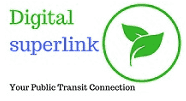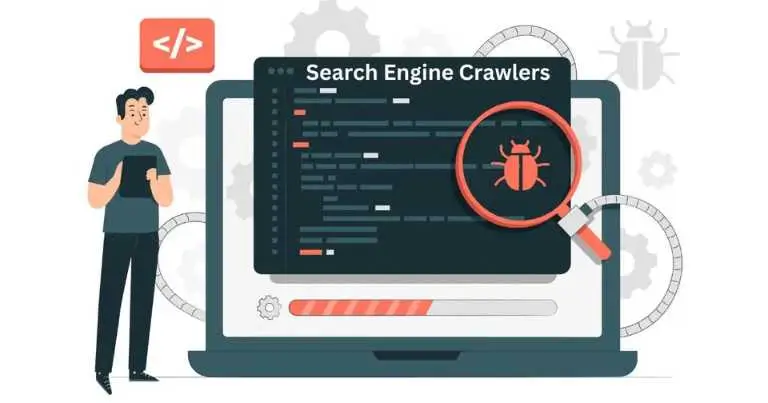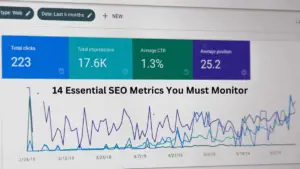Introduction to Crawlers
An automated program called a search engine crawler, sometimes referred to as a web crawler or spider, searches the internet for newly updated and new pages that need to be indexed. Crawlers are primarily used to collect data and add new information to search engine indexes such as Google and Bing.
When the internet started expanding quickly in the 1990s, crawlers were first made available. Search engines require a more efficient method than searching and manually adding new websites to maintain current indexes. To find new information on the web, earlier crawlers started with a seed list of URLs and followed the links on those pages.
A crawler’s primary job is to retrieve pages from the web graph, extract links from them, index the content, and then do it again. Rather than randomly browsing, crawlers follow links methodically and automatically from one website to another. They use algorithms as they crawl to decide which pages, depending on variables like authority, relevancy, and freshness, are most crucial to index.
The powerful computers known as search engine crawlers of today are capable of indexing billions of web pages. These days, they efficiently and intelligently crawl the web using AI and machine learning. Search engines can now keep up with the exponential expansion of online content thanks to crawlers.
How Crawlers Work
Search engine crawlers are automated programs that methodically search the web for and index new content. They are frequently referred to as spiders or bots. They explore each website’s structure and content by clicking on links from page to page. Among the crucial elements of crawlers’ operation are as follows:
Crawling Algorithms
Algorithms are used by crawlers to effectively navigate the huge surface of the internet. These determine the crawl order and priority, accounting for several elements such as page importance, update frequency, content quality, and web structure. A few well-known algorithms are OPIC, HITS, Hilltop, and PageRank.
Crawl Frequency
Websites are routinely viewed by crawlers in search of fresh or updated material. Big search engines don’t crawl smaller websites as frequently—sometimes not even once a day—as they do larger ones. Numerous elements, including a website’s size, update pace, quality signals, and webmaster guidelines, influence how frequently it is crawled.
Crawl Budget
Search engines can download and process a fixed number of pages per day due to their limited crawl budget. As a result, they must rank websites in order of importance and balance coverage and uniqueness. Webmasters can assist search engines by removing unnecessary or small-sized content.
Politeness Policies
Reputable crawlers implement politeness policies to avoid overloading servers. This involves rate limiting, respecting robots.txt directives, and identifying themselves via user-agent strings. Webmasters can specify crawl delays in robots.txt.
robots.txt
The robots.txt file gives webmasters control over crawler access. It specifies which URLs to allow or block from indexing. Crawlers are expected to comply with these directives, but malicious crawlers may sometimes ignore them.
Also Read- How to do Search-Engine-Submission in SEO?
Types of Crawlers
Search engines use different types of crawlers to index the web. The main types are:
General Crawlers
General crawlers, also known as universal crawlers, crawl, and index all pages they come across. They do not focus on a specific site or content type. General crawlers aim to make a comprehensive index of everything on the web.
Google’s main crawler is called Googlebot. It crawls billions of pages across the web and adds them to Google’s search index. Bing and Yahoo also use general crawlers to make their search indexes.
Focused Crawlers
Focused crawlers concentrate on a specific point, content type, or content. For example, Google News uses a focused crawler to find and index news content across the web.
Other focused crawlers may concentrate on social media sites, e-commerce product pages, or scholarly articles. They allow search engines to build specialty indexes for vertical search engines.
Incremental Crawlers
Incremental crawlers revisit websites periodically to check for new content. They focus on recrawling sites and pages that update frequently.
News sites and blogs are common targets for incremental crawlers. This allows search engines to keep their indexes fresh with the latest content.
Deep Crawlers
Deep crawlers dig deeper into websites to find content regular crawlers may miss. They follow long chains of links and crawl beyond the home page of sites.
Deep crawlers help search engines discover content that is buried deeper within sites. This content can still be relevant for searchers despite not being prominently linked on main pages.
Crawler Challenges
Crawlers face various challenges when attempting to index the vast scale and ever-changing nature of the web. Some of the key challenges include:
- Scale – The sheer size and scope of the web presents an enormous challenge. There are billions of web pages and the number continues to grow rapidly. Crawlers must constantly crawl the web to keep indexes fresh.
- Changing Content – Web content changes frequently, sometimes by the second. Crawlers strive to re-crawl pages regularly to detect changes, but may still miss some. Dynamic content and user-generated content amplify this challenge.
- Duplicate Content – Many websites publish duplicate or near-duplicate content across different URLs. This creates extra work for crawlers to detect and consolidate, while sometimes mistakenly indexing duplicate pages.
- Blocked Content – Some sites block or restrict crawlers with robots.txt files, noindex directives, or technical barriers like CAPTCHAs. This causes crawlers to miss content.
- Cloaking – Deceptive practices like cloaking serve different content to users vs crawlers. This results in irrelevant or low-quality pages getting indexed. Crawlers aim to detect cloaking, but it remains an ongoing battle.
Crawlers employ various methods to overcome these challenges, but there remain inherent difficulties in comprehensively crawling the dynamic web. Optimizing sites to facilitate easy crawling helps search engines index sites more completely and efficiently.
Optimizing for Crawlers
Search engine crawlers are automated programs that systematically browse the web to index pages. While crawlers do a lot of work behind the scenes, there are steps webmasters can take to optimize websites for crawler efficiency. This ensures pages get properly crawled, indexed, and ranked in search engines.
Some key crawler optimization tactics include:
Sitemaps
Submit an XML sitemap to search engines like Google and Bing. This provides a list of all the pages on your site to help crawlers efficiently discover new and updated content. Create a sitemap.xml file and submit it to Google Search Console for Googlebot.
Regularly update your sitemap as you add or remove pages. This ensures search engine indexes stay current.
Internal Linking
Link out to important pages throughout your site’s content. This helps crawlers navigate and determine the relevance of those pages.
Use descriptive anchor text in internal links to indicate what the page is about. For example, Learn more about( search engine optimization)(/ seo- guide).
Meta Tags
Include a meta description to summarize page content. Crawlers scan meta tags to understand the topic of a given page.
Use relevant keywords naturally in the meta description. But avoid keyword stuffing, as that looks spammy.
Page Speed
Optimize page speed by minifying code, compressing images, and eliminating render-blocking resources. Fast page load times help crawlers analyze content more efficiently.
Leverage browser caching and keep page size lean. Essential for mobile optimization too.
Mobile- Friendliness
Make sure your site is mobile-friendly and responsive. Google prioritizes mobile-optimized pages in search rankings.
Use a responsive design, eliminate pop-ups, and size content appropriately for lower screens. Test different devices to ensure usability.
By optimizing websites for crawler accessibility and efficiency, webmasters can improve how search engines index and rank their pages. This allows more relevant content to be surfaced for searchers.
Crawler Impact on Rankings
Search engine crawlers play a critical role in determining rankings. Factors directly influenced by crawlers include
- ** Crawl Frequency **- How often a page is crawled impacts how quickly it can be indexed and ranked when content is added or updated. Pages crawled more frequently tend to rank higher.
- ** Indexation Rate **- The percentage of a site’s pages successfully crawled and added to the search index also correlates with rankings. Higher indexation rates allow more pages to be eligible for ranking.
- ** Freshness **- Search engines favor more recently updated, fresh content. Frequent crawls allow new and revised content to be discovered and reflected in rankings faster.
So optimizing crawl frequency for important pages can directly influence rankings. However excessive crawling can overload servers and be counterproductive.
Finding the right balance is key. Understanding a site’s crawl stats like crawl rate, crawl demand, and indexation levels allows for aligning crawl prioritization with business goals.
Focusing crawler resources on high-value pages improves their freshness and visibility in rankings. Proper technical optimizations like XML sitemaps, internal linking, and robots.txt instructions complement smart crawl analysis and prioritization. Together, they enable maximizing the positive impact of crawlers on search rankings and traffic.
Common Crawler Myths
There are several common myths and misconceptions about how search engine crawlers work. Some website owners try to exploit assumed crawler behavior in hopes of boosting their rankings. However, most of these tactics don’t work as intended.
Blocking Crawlers
A common myth is that blocking or restricting access to certain crawlers will help a site’s rankings. Some believe that limiting crawler access will reduce server load. still, most major search engines require full access to a website to properly index and rank it. Restricting crawlers can lead to pages being deindexed or rankings decreasing.
Fooling Crawlers with Cloaking
Another myth is that pages can be optimized differently for users versus crawlers through a technique called cloaking. The idea is to display one version of a page to users, and a different, more SEO-optimized version to crawl bots. However, this violates search engine guidelines. Engaging in cloaking risks manual or algorithmic penalties if detected.
Crawler Traps
Some webmasters also create crawler trap pages loaded with keywords meant to attract and absorb crawler resources. The goal is to keep crawlers focused on low-value areas of a site. However, most crawler algorithms today recognize and disregard obvious crawler traps. Creating them simply wastes time and resources.
In general, tactics that attempt to manipulate or deceive crawlers against their protocols rarely succeed today. The best practice is to focus on genuine content quality and technical site health rather than trying to exploit crawlers.
Crawler Ethics
The act of crawling web content raises important ethical considerations that search machines and website owners must carefully weigh. Crawling inherently involves accessing and duplicating content that’s created by others. While this enables search engines to index the web and deliver relevant results, it also opens the door to potential abuse if not done responsibly.
One ethical concern is around permission and terms of service. Search engines and scrapers should respect the wishes of site owners, including crawling restrictions and noindex directives. Ignoring policies around how and when content may be accessed could be considered unethical. For example, scraping pricing data from a site that prohibits it in their ToS.
Privacy is another consideration. GDPR and other regulations aim to protect user data and require concurrence for processing personal information. When crawling content, search machines must be careful not to gather protected user data without authorization. Even public data may require anonymization.
Beyond laws, general ethical principles of consent, minimizing harm, and fairness also apply. Crawling shouldn’t unduly tax servers or bandwidth. Nor should it obtain competitive business intelligence meant to be private. The public good enabled by search must be weighed carefully against personal rights and unintended consequences.
In summary, while crawling is necessary for search, it should be done conscientiously and transparently. Engines ought to give website owners recourse against harmful scraping. Crawl bots should adhere to site-owner guidelines, access data minimally, and use it only for clear public benefit. With thoughtful programs and responsible practices, ethical crawling can power useful searches while respecting other stakeholders.




